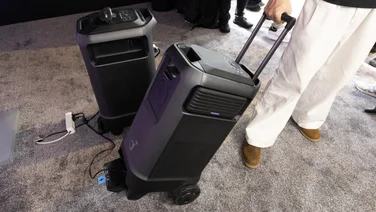To help us provide you with free impartial advice, we may earn a commission if you buy through links on our site. Learn more

The internet officially has no more IPv4 addresses to give out, after the last blocks of addresses were handed out this week. It has prompted calls for a move to IPv6 in order to safeguard the future expansion of the internet. An IP address is required by every internet connected computer and is the IT equivalent of a postal address of phone number. The current system used was developed in the 70s and consist of a 32bit binary number, which is converted to the more human-friendly dotted-quad notation, such as 212.100.242.154. In total there are around four billion addresses that can be used, which sounds like a lot, but the rise in the number of internet connected devices and websites has meant that the pool of available addresses has rapidly been diminished. As of yesterday, the four international non-profit groups that manage IP addresses worldwide – ICANN, NRO, IAB and Internet Society – have handed over the last five blocks of IPv4 addresses to the five Regional Internet Registries (RIR), leaving nothing in reserve for the first time ever. It means that the only way to safeguard future internet expansion and ensure that there are further IP addresses is to move to IPv6, which supports a range of internet addresses that’s a billion-trillion times larger than the total pool of IPv4 addresses. “It’s only a matter of time before the RIRs and Internet Service Providers (ISPs) must start denying requests for IPv4 address space,” said Raúl Echeberría, Chairman of the Number Resource Organization, the umbrella organization of the five RIRs. “Deploying IPv6 is now a requirement, not an option.” The huge number of IPv6 addresses gives a wider range of possibilities. For starters, it would be possible for every single device on your home network to have an internet-visible address so you can contact them directly. Currently, with IPv4 you get a single internet IP address that you share using Network Address Translation (NAT). This means that accessing one of your devices over the internet requires setting up port forwarding. Whether having all of your devices internet visible or not is a good idea is a separate point, as NAT adds a layer of security in preventing hackers from touching your devices. There are several technical barriers to implementing IPv6, too. Current hardware doesn’t support the protocol and needs to be upgraded. Not all hardware, such as home routers, will be able to be upgraded, which means buying new kit. A short-term alternative is to use tunnelling, which sends IPv6 traffic over an IPv4 link to an intermediate server that strips out the IPv6 traffic and sends it on its way. However, this adds an overhead that could slow down an internet connection. It’s not all bad news, though. Currently, there are enough IPv4 addresses to last until the end of the year, and the UK is pretty well stocked for these addresses. It means that IPv4 won’t simply die out, but rather that IPv6 will be brought in online alongside it. This will require hardware and software that supports both protocols, such as the Windows 7 operating system. Internet routers will need to be updated to support both protocols, too.
“This is a major turning point in the on-going development of the Internet,” said Rod Beckstrom, ICANN’s President and CEO. “No one was caught off guard by this. The Internet technical community has been planning for IPv4 depletion for some time. But it means the adoption of IPv6 is now of paramount importance, since it will allow the Internet to continue its amazing growth and foster the global innovation we’ve all come to expect.”






